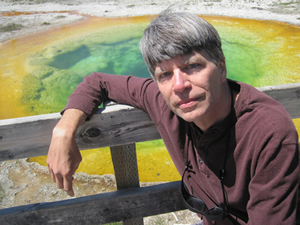The Wilmington Concert Association is a premier concert presenter in the Port City, offering some of the most illustrious performers heard here each season. The leading pianist Emanuel Ax was the latest artist of international caliber to appear on this series, in a standard yet wonderfully varied program of music by the great masters.
The first work was Beethoven’s delightful Piano Sonata in A Major, Op. 2, No.2. The piece started with what turned out to be a signature Ax sound: a wonderful light, delicate touch. Contrasted to that was a somewhat leisurely tempo which projected a rather sober character. There was also a tendency in forte passages for individual beats to be emphasized, sometimes heavily, at the expense of overall phrasing. That did not repeat itself afterwards in the program, however; Ax may have been reacting to the ungrateful acoustics of the hall.
Ax brought his light sound to bear again at the start of the second movement as well as in the return of that theme. By contrast, the surprise shift to the minor mode had a rich orchestral ring. Both of the following movements featured beautiful light-tone playing as well. At times one would have liked more rising and falling of dynamics, as opposed to the prevailing delicacy. However, the dance-like quality was very appealing, and Ax over and over showed wonderful articulation and transparency in the fingerwork. This is another trademark beauty of his playing.
Beethoven’s Sonata in C Minor, Op. 13, the famous “Pathétique,” followed. In the first movement, there were many effective dramatic shifts and contrasts. Some of the strongest moments were the silences. There was a gripping hush leading into the development. That said, sometimes Ax stayed on an even-keeled lighter sound rather than bringing out the drama. The gorgeous second movement drew out rich long lines. The third movement showed more finely detached, articulated fingerwork and a dramatic coda. As in the first movement, at times the tension was reduced by Ax’s tendency to remain soft and more delicate for extended passages. Even with that reservation, this was a compelling reading of the piece.
Brahms’ last work for piano, the Klavierstücke, Op. 119, began the second half. There was much beautiful playing here, especially in the long phrases, where Ax lovingly highlighted the top lines. Another strong quality of Brahms was much less present: the full sonorous bass of the piano, and expressive voice movements in the middle lines. The brooding first intermezzo, with its continuous tracery of dissonance, showed much melodic beauty but lacked tension and darkness. The same was true for the outer sections of the second intermezzo, with its more agitated mood. The middle section however, with its barcarolle-type character, was gentle and lovely. In the ending rhapsody, Ax emphasized the rhythmic top line; in the A-flat section he brought out its beautiful plucked quality. Under-expressed was the massive bass sonority of this music, with its surges of tone and a minor-mode peroration that brings the entire range of the piano to bear in powerful, ringing defiance.
In the lighter hues of Brahms’ Variations and Fugue on a Theme by Händel, Ax was very much at home. His technique consummately cut through all difficulties in this demanding work. The soft variations brought forth great beauties. The kaleidoscope of mood changes was effectively portrayed, as was the larger architecture of the piece. In the ending fugue, voices moved transparently through the registers, and the dynamic contrasts created a flow that carried the large scale with complete conviction.
The bright and exciting conclusion was received by the audience with a standing ovation. Ax treated his listeners to an encore with the romance from Brahms’ Op. 118, one of the most achingly nostalgic pieces ever written for the piano. One would have loved a more richly expressive middle-line melody here. Still, Ax’s vision of the piece produced great beauty, and gave his appreciative audience a reflective ending to this concert of masterworks.
It was Super Bowl Sunday. This program provided a wonderful alternative to the game!
The WCA’s season continues on April 3 with Prokofiev’s Cinderella, courtesy of the Moscow Festival Ballet. For details, click here.











